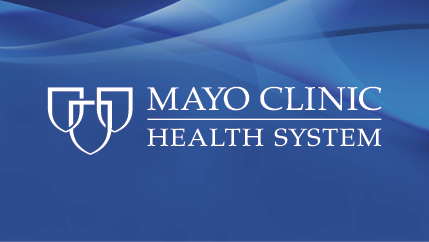Posted By

Tarek Khalife, M.D.
Birthing Centers, Obstetrics & Gynecology (OB-GYN), Prenatal Care

Gokhan Anil, M.D.
Birthing Centers, Obstetrics & Gynecology (OB-GYN)
Recent Posts
Is urine incontinence normal for women?

Urine incontinence, or the involuntary leakage of urine, is a common symptom that affects 50% of adult women. Prevalence of this problem increases with age, as up to 75% of women over 65 report urine leakage. A woman's physical, social and psychological well-being is negatively impacted. Quality of life at home and in the workplace may deteriorate.
Despite being a common problem, only 25% to 61% of women who experience weekly urine incontinence episodes discuss the problem with their health care teams. Some women may find it too embarrassing to discuss symptoms, while others may think it is normal for them to experience incontinence after childbirth or with aging.
Urine incontinence is not a singular issue; rather, it's caused by several factors. Many factors often coexist and increase the severity of symptoms and complexity of treatment.
The two most common types of urine incontinence are stress incontinence and urge incontinence. A combination of both also can occur and is called mixed incontinence.
Stress incontinence
Stress incontinence is involuntary urine leakage in relationship to physical activities, such as coughing, laughing, sneezing, jumping or even walking.
The term "stress" is used to define this type of incontinence because the stress exerted on the bladder and the neck of the bladder by increased abdominal pressure results in failure of the weakened continence mechanisms and causes urine leakage.
Women with this type of incontinence tend to stop doing their favorite sports or recreational activities and try to adapt to a less-active lifestyle.
Treatment options for stress incontinence
Often, women with stress incontinence issues are referred to pelvic floor physical therapists who specialize in women's health. The therapist will coach on how to conduct Kegel exercises to strengthen pelvic floor muscles to work more effectively and efficiently. If this doesn't improve symptoms after adequate trial, other treatment options are considered.
There also is increased awareness and availability of in-home pelvic floor muscle training devices that are meant to help people perform better pelvic floor training. They're usually in the form of an application-based biofeedback device that is inserted vaginally to gauge strength of the pelvic floor muscle contraction. Others provide electrical muscle stimulation to result in passive muscle contraction. Some devices are in the form of vaginal weights with various shapes and sizes. Data to support these muscle-training devices is limited yet promising for women with mild or moderate stress incontinence.
Nonsurgical treatment options also are available. An intravaginal pessary is one of the most popular and commonly used options. Pessary is a silicone-based device that is fitted to the vagina and inserted by a health care professional in the clinic. Different types of pessaries are used for different pelvic floor problems, such as urine incontinence and uterovaginal prolapse. Pessary shapes and sizes vary to fulfill the function and maintain comfort. The knob present in incontinence ring pessaries push on the urethra to overcome the stress pressure imposed by daily activities. Most people have immediate symptom relief, and it's reversible upon removal of the device.
Over-the-counter options are available as well. An incontinence tampon, also called Impressa, is worn for 12 hours and is not reusable. Other devices that are placed vaginally and provide similar support as the pessary are available, like Uresta. It's a small, bell-shaped device that's inserted into the vagina at the beginning of each day or before any activity that usually results in urinary leakage. The device can be worn for the entire day or used just for certain activities.
These devices should be removed at the end of each day and before intercourse. Studies are limited, yet show comparable effectiveness with no adverse effects.
Surgical options are available for women without adequate relief with other options or when these therapies fail. The midurethral sling is the most used surgical procedure. It has a high success rate and can provide rapid relief for patients with low risk of complications. The sling procedure uses a synthetic mesh material that is positioned to replace the damaged fibromuscular support of the urethra and reestablishes the continence mechanism.
The procedure carries an 85% to 95% success rate, with mesh complications reported at less than 3% if cases. The sling procedure is considered minor surgery. Patients often are discharged home the same day with minor limitations. This is the single most investigated procedure with strong cure rates, making it the gold standard of care.
Urethral bulking is a minor surgical procedure in which synthetic material is injected into the wall of the urethra near the bladder. This adds volume to the wall of the urethra to help provide support of the urethra and better control of urine flow. Although the overall success and cure rate are lower than sling operations and these injections often need to be repeated, they're less invasive and offer faster recovery.
Urge incontinence
Even though stress incontinence is distressing, urge incontinence usually causes higher distress in women. It's defined as the compelling sudden urge to void that cannot be delayed or postponed, and results in urine leakage. This type of incontinence does impose more restrictions on a woman's lifestyle. Women tend to practice toilet mapping strategies, and limit outings and social activities because of the fear of social embarrassment.
This type of incontinence usually is caused by the inability of the bladder to allow pressure-free storage of urine under normal bladder capacity. The bladder tends to contract and increase pressure that results in the strong urge to void and often is associated with urine loss.
Risk factors are usually related to increasing age, obesity, family history, menopausal symptoms and medical conditions, such as diabetes or multiple sclerosis, as well as smoking and urogenital microbiome.
Treatment options for urge incontinence
Treatments for this type of condition also should address the underlying cause, such as better diabetic control; weight loss; or limiting of bladder irritants, like smoking, alcohol, caffeine and carbonated beverages. Bladder retraining with timed voiding intervals may provide significant relief for some patients and can be quite effective.
Medications that relax bladder muscles can improve urge incontinence symptoms as a second-line treatment. The most reported side effects include dry mouth, constipation, heartburn and dry eyes. A newer class of medications avoid some of these side effects; however, they may cause slight elevations in blood pressure.
Peripheral tibial nerve simulation is a third-line treatment option offered in the clinic setting that uses an acupuncture-like needle and mild electric simulation. The treatment consists of 12 sessions lasting 30 minutes each with optional once-a-month maintenance therapy options.
Bladder muscle Botox injections are being used in patients who have severe symptoms. Injections offer reasonable improvements in symptoms for six months or longer, with common side effects being related to urine retention or urinary tract infections. These injections must be repeated every six to nine months.
Sacral nerve modulation is a viable option for women with severe symptoms, especially those who do not respond to conventional first- and second-line treatments. This is the surgical implantation of a device that helps modulate the neuronal circuitry to render the bladder more receptive to urine with decreased urgency and urinary leakage symptoms.
Although urine incontinence is common, it's not normal. It's important to have a thorough evaluation to determine the type of incontinence and potential causes. Treatment options are available to help women improve the quality of their lives. Discuss your symptoms and concerns with your health care professional.
Watch this video to learn more about urinary incontinence treatments, including sacral neuromodulation therapy:
Tarek Khalife, M.D., and Gokhan Anil, M.D., are OB-GYNs in Mankato and New Prague, Minnesota.





